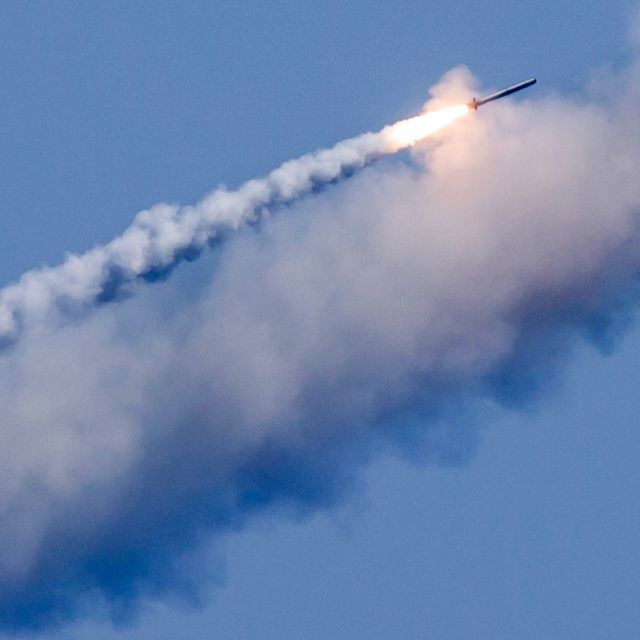KYLE MIZOKAMI

Some of Russia’s most high-tech equipment relies on obsolete electronics and parts it can no longer source from the rest of the world. The country’s inability to produce enough semiconductors, essential for the production of modern weapon systems, means it must use older microchips—including commercial chips imported from the rest of the world. This shortage will have serious implications for the future of the Russian military, and for Russian arms exports abroad.
The New York Times reports that experts at Conflict Armament Research (CAR) examined parts from several downed Russian weapon systems. (CAR “identifies and tracks conventional weapons and ammunition in contemporary armed conflicts,” according to the organization’s website.) The parts were recovered from the 3M14 “Kalibr” ship-launched land-attack cruise missile, 9M544 300-millimeter guided rockets from the Tornado rocket launcher system, Kh-59 “Ovod” air-to-ground missiles, and Kh-101 aircraft-launched land-attack cruise missiles.
The scene of a Russian missile attack on central Vinnytsia, central Ukraine. Twenty-three civilians are reported killed after Kalibr cruise missiles launched by the Russian military from a submarine in the Black Sea hit downtown Vinnytsia, July 2022. Kalibr is another Russian weapon that uses Western microchips.Future Publishing//Getty Images
Together, the four weapons cover a broad array of launch systems and a considerable amount of Russia’s land-attack weapons. All four used the same electronic components, marked SN-99, that were revealed to be satellite navigation receivers.
Even more surprisingly, the SN-99 components were not manufactured in Russia and instead were sourced overseas. “Having documented the printed circuit boards inside the satellite navigation signal receiver blocks of these four missiles,” CAR explained, “they were all made of the same non-Russian components, manufactured between 2012 and 2020.” CAR did not explain exactly which country the circuit boards came from.
CAR explains on its website that it has identified “a total of 144 non-Russian manufacturers of more than 650 unique component models in Russian material used in the war on Ukraine.” In addition to the four types of air-to-ground munitions, foreign electronics were found in the Ka-52 “Alligator” attack helicopter, drones including the Orlan-10, military radios, and electronic warfare equipment.
Russia’s high-tech manufacturing sector is relatively underdeveloped compared to other major countries, meaning Moscow must import semiconductors and other electronics. Importing chips is not an unheard of tactic, but it does leave defense contractors at the mercy of international sanctions designed to starve Russia of advanced military technology.
A CAR researcher explained the organization intended to ask the manufacturers how the chips ended up in Russia, whether through legitimate purchase or a shell company or similar cut-out. Countries under sanctions often set up dummy companies to buy military or dual-use military-civilian equipment abroad.
The payload body of a Russian Tornado rocket discovered in Kharkiv, Ukraine. Tornado is another system identified as using Western parts. The rocket ejects grenade-like submunitions in midair, scattering them over a wide area for greater effect. Most countries have banned or de facto banned the use of submunitions due to humanitarian concerns.
Will international sanctions cripple Russia’s ability to manufacture new weapons? Historically, Russia has had a great deal of success in getting its hands on sanctioned equipment. In the 1980s, Soviet submarines inexplicably became much quieter and capable of evading detection. Western intelligence tracked this breakthrough to the sale of CNC machines, then advanced manufacturing technology, by Japan’s Toshiba and Norway’s Kongsberg to front companies operated by the KGB. These CNC machines were used to make advanced submarine propellers that reduced the noise a submarine made underway.
Russia has incurred a tsunami of second-order effects stemming from its invasion of Ukraine, including broad international sanctions. It has also used a tremendous amount of rockets and missiles, all requiring technology it can’t build itself. If it can’t get them, Russia could find itself unable to defend itself, let alone conquer Ukraine.
No comments:
Post a Comment